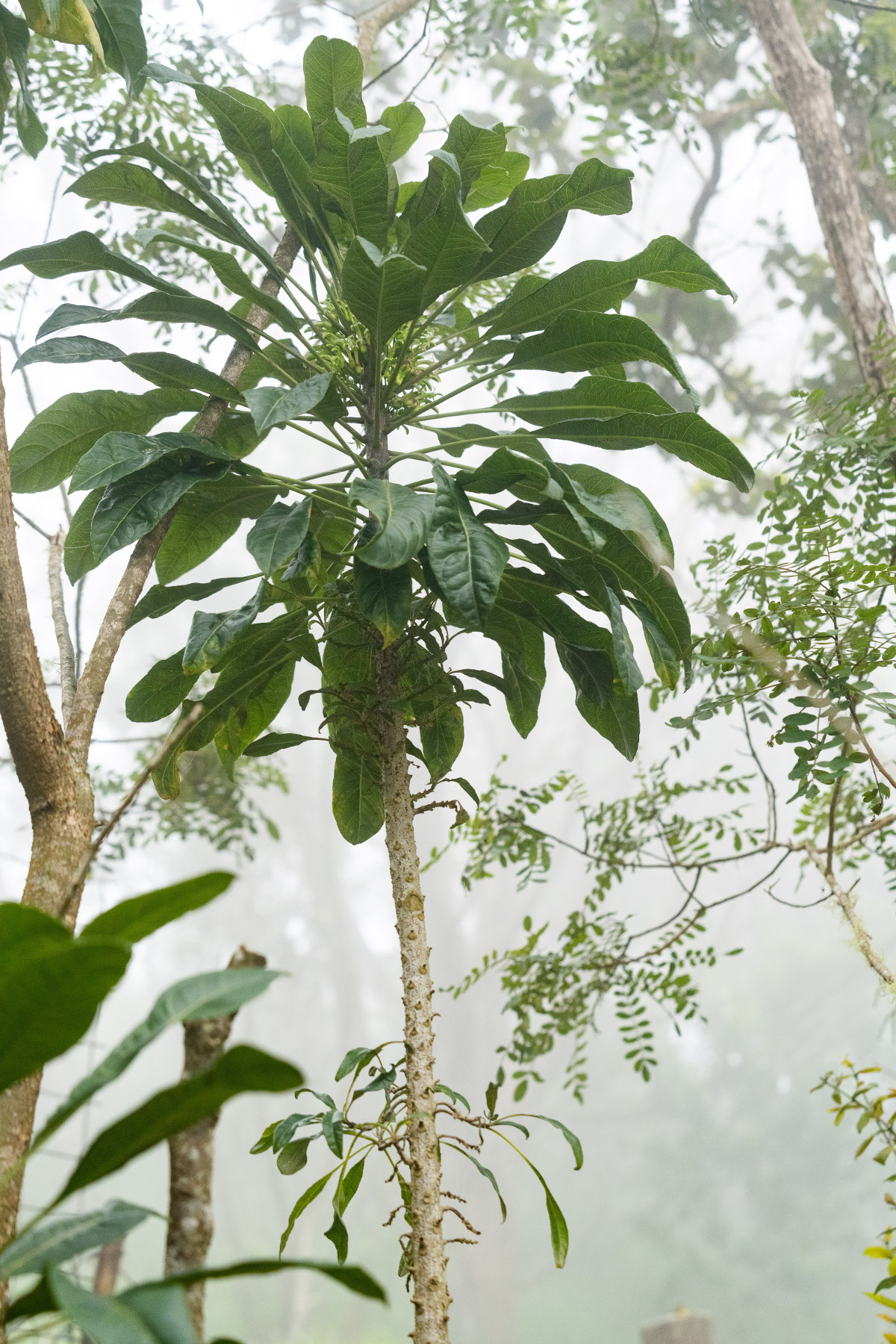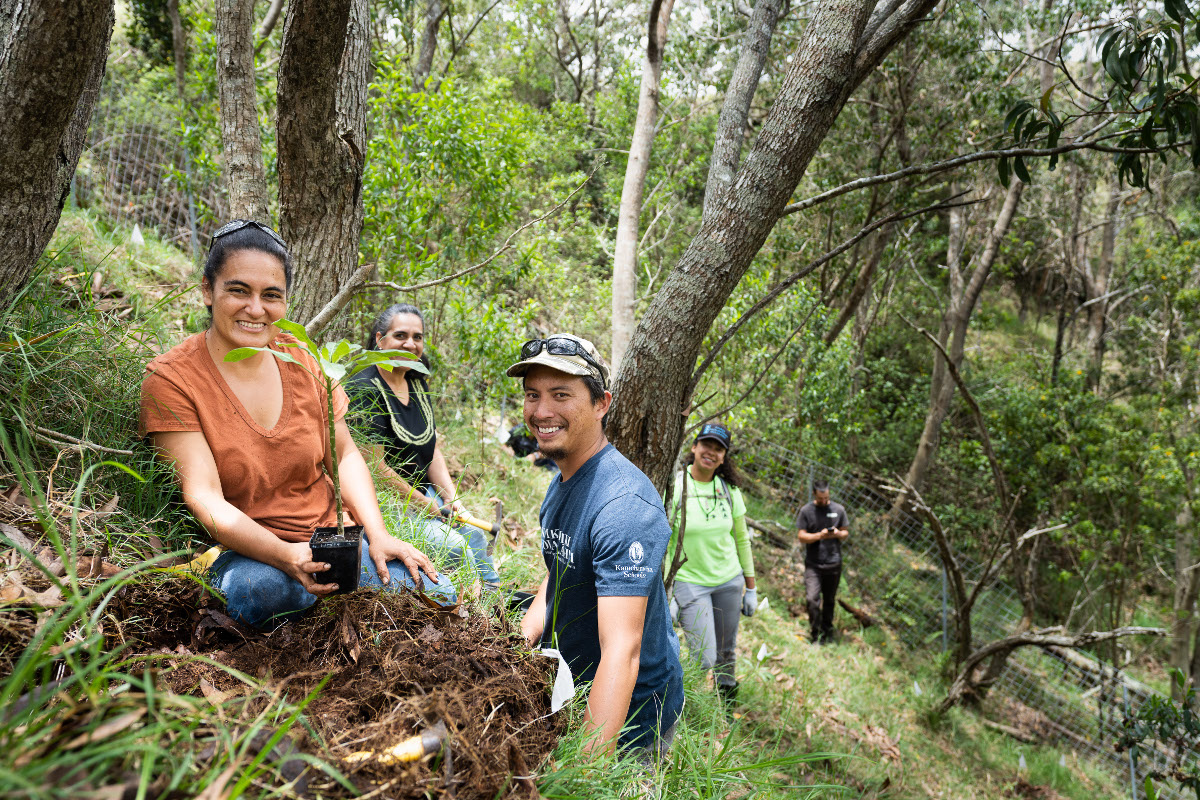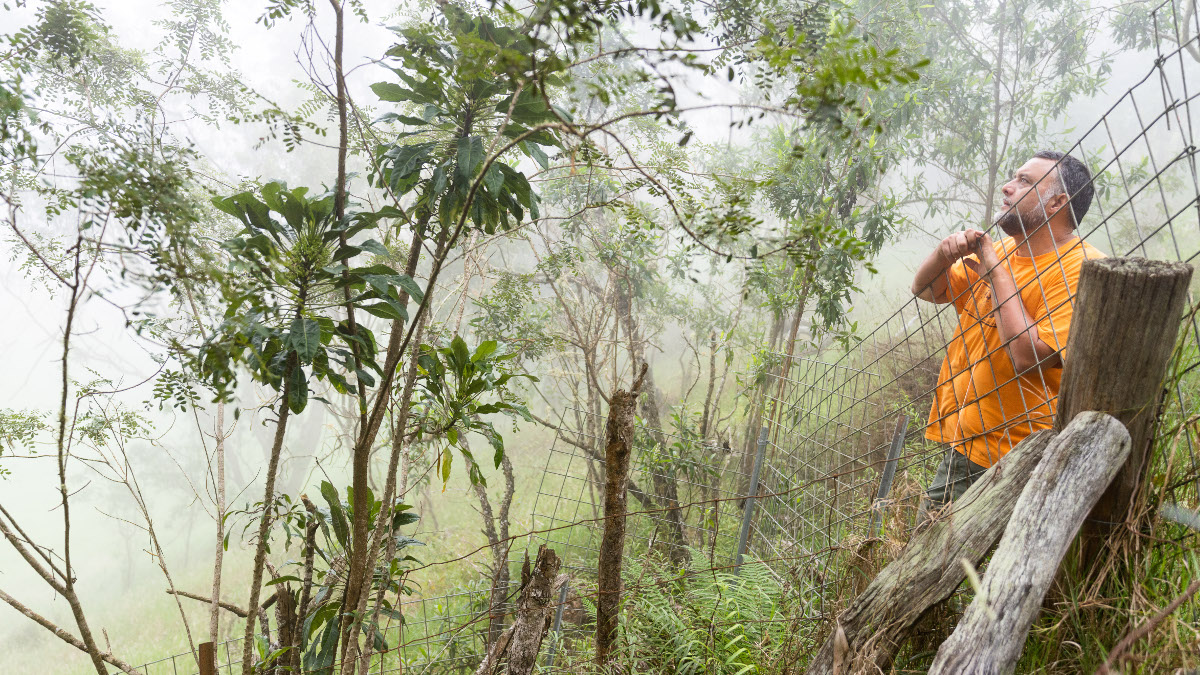(BIVN) – Three organizations on Monday announced the discovery, and successful propagation, of a Hawaiian plant thought to be extinct in the wild.
The small population of Delissea argutidentata was found in early March 2021 on Kamehameha Schools’ land “in a remote section of ma uka Kona on Hawai‘i Island.” The exact location is being kept confidential to protect the plant, officials say.
Seeds from the uncovered Delissea argutidentata were successfully propagated by the Volcano Rare Plant Facility, and about 30 keiki were planted.
From a joint Kamehameha Schools / Hawaiʻi DLNR / Three Mountain Alliance news release:
Kamehameha Schools (KS), the State of Hawaiʻi Department of Land and Natural Resources (DLNR) and Three Mountain Alliance (TMA) today announced the discovery of a small population of Delissea argutidentata, a plant thought to be extinct in the wild.
The three organizations successfully planted 30 keiki plants propagated by the Volcano Rare Plant Facility from seeds retrieved from the small population of this newly-found plant that was detected in early March 2021 by a TMA staff member. The plant was discovered in a crater on KS land in a remote section of ma uka Kona on Hawai‘i Island. The exact location is being kept confidential to protect the plant.
“Kamehameha Schools has been successful at stewarding native ecosystems as a whole but what’s really exciting is that this is the first step toward a much bigger focus on rare species recovery,” KS Senior Natural Resources Manager Amber Nāmaka Whitehead said. “We need both – healthy native ecosystems and every one of our rare species. They are critically important to our Hawaiian cultural identity and our health and well-being as a people.”
The TMA staff member who found the plant was collecting seeds from other plants for use in nearby restoration areas. The population was found growing on a dead māmane stump adjacent to an old enclosure, and appears to consist of three separate plants. Within the enclosure, the remains of a larger individual plant were visible. The discovery is significant because the plant species was previously considered extinct. Over the past year, staff from all three organizations have taken actions to protect the small population of plants and to safekeep its genetics.
“Rediscovery of Delissea is such an important message of hope,” TMA Coordinator Colleen Cole said. “In Hawaiʻi, there is often much focus on loss – loss of species, forest, sacred places – and maybe that is human nature but the Delissea reminds us to always nurture and make room for hope and discovery. This was such an inspirational event that means now we can reintroduce this plant in large numbers to its former range, reminding us to remain hopeful and vigilant.”
Delissea argutidentata was last seen in this area in the early 1970s within three small enclosures fenced by a former tenant. A plant pressing collected from the area in 1971 notes that there were only three plants remaining, the tops of all the plants were damaged – presumably by cattle – and there was no regeneration, likely due to the dense grass. The forward-thinking and installation of protective fencing are key attributes to the species’ persistence in an area highly modified by previous pastoral usage.
In 1992, a single individual plant was rediscovered at Puʻu Waʻawaʻa, but this last known wild plant died in 2002. Until the recent find, there were no known wild plants and the species was considered extinct in the wild, though seed was collected from the Puʻu Waʻawaʻa individual and many of its outplanted keiki survive today.
“The fact that it was discovered here, brings it back to this place,” Joshua VanDeMark, DLNR coordinator of the Plant Extinction Prevention Program (PEPP), said. “The reintroduction of a rare species like this is so critical because the habitat is what will allow it to persist into the future.”
Delissea argutidentata has a long, unbranched, palm-like trunk topped by a dense round cluster of leaves. They can grow up to 35 feet tall, much taller than any other species in the lobelia family. They were previously found growing abundantly under the shade of giant koa trees and on the bottoms and slopes of old volcanic craters.
Of the 16 recognized species of Delissea, 14 are extinct and the remaining two are endangered. While no Hawaiian name has been recorded for Delissea argutidentata, they are very similar to plants in the related genus Cyanea, and could have been known by the same name, Hāhā; or given its extremely tall, unbranched form, one could descriptively call this plant hāhā kiʻekiʻe (tall hāhā).
Along with staff from TMA and the DLNR Division of Forestry and Wildlife (DOFAW), KS staff visited the area in March 2021, installed a temporary fence around the population, and collected eight ripe fruit. Some fruit were sent to Lyon Arboretum for storage and others were taken to the Volcano Rare Plant Facility for propagation.
In February 2022, KS staff revisited the population and collected 12 fruit from the two largest plants. These fruit were sent to Lyon Arboretum for storage. Staff also observed two tiny wild Delissea argutidentata seedlings within the enclosure installed in March 2021.
“We wouldn’t be able to do any of this without these partnerships. For Kamehameha Schools and other private landowners, natural resources stewardship is something you can’t do in one place, it’s something that happens at a landscape scale. We rely on partnerships with a variety of folks to help us realize this vision of healthy ‘āina,” said Whitehead, a 1997 Kamehameha Schools Kapālama graduate.




by Big Island Video News1:28 pm
on at
STORY SUMMARY
HAWAIʻI ISLAND - Delissea argutidentata was last seen in the area in the early 1970s. The last known wild plant, found in Puʻu Waʻawaʻa, died in 2002.